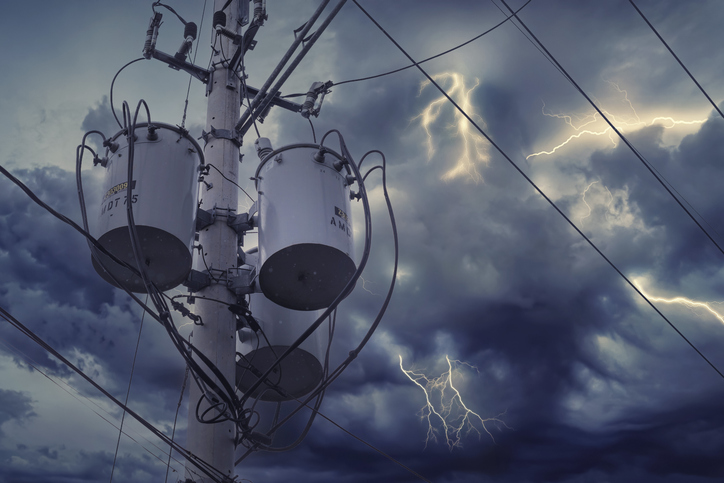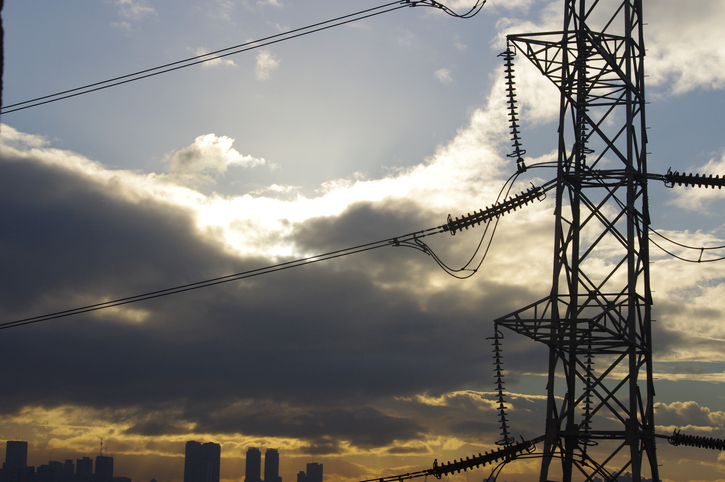2013 Philippines Blackout

Imagine you're in Manila on a scorching day in 2013, and suddenly, the entire city plunges into darkness. The 2013 Philippines blackout wasn't just an inconvenience; it was a wake-up call. When four power plants went offline due to a major transmission line trip, the ensuing chaos highlighted the fragility of the country's energy infrastructure. This incident, which resulted in millions of dollars in economic losses, raised significant concerns about the nation's dependence on aging coal-fired plants. So, what immediate steps did the government take, and how did this event shape future energy policies?
Causes of the Blackout
The primary cause of the blackout was the tripping of a major transmission line, which disrupted the electricity supply across Manila and Bulacan province. This incident resulted in the loss of approximately 1,690 megawatts of power as four power plants went offline, severely impacting Manila Electric Co.
The situation was exacerbated by the shutdown of 19 power plants in Luzon, which were taken offline due to overheating risks amid a severe heatwave. The extreme temperatures pushed the grid to its limits, making it unstable and susceptible to power outages.
Another critical factor was the reliance on elderly coal-fired power plants, many of which are 20 to 30 years old. These outdated facilities are prone to unplanned outages, further increasing the frequency of blackouts.
Additionally, the Philippine government's energy-saving measures have been insufficient in addressing the core issues of outdated infrastructure and the growing demand for electricity. This has led to a reliance on costly backup generators, which is not a sustainable solution.
Immediate Consequences
A major transmission line failure plunged Manila and Bulacan province into darkness, causing an immediate loss of approximately 1,690 megawatts of power for Manila Electric Co. This massive disruption to the power grid led to widespread chaos. The Light Rail Transit system in Manila suspended operations for about 90 minutes, severely disrupting commutes. Businesses halted operations, and homes were left without electricity, causing immense inconvenience.
In Pampanga and Tarlac provinces, the power loss amounted to around 300 megawatts. Local economic activities took a significant hit, particularly in sectors that rely heavily on a consistent power supply. Factories and businesses faced financial losses estimated at 556 million pesos (US$9.5 million) for every five hours without electricity, significantly impacting those in the manufacturing sector.
The blackout prompted the government to evaluate emergency measures to restore stability to the affected regions and mitigate further economic damage. The situation underscores the urgent need for a robust response to prevent similar occurrences in the future, as the power grid remains vulnerable.
Government Response
In response to the power crisis, the government has activated emergency protocols and placed the Luzon grid on red alert during peak hours. Citizens are urged to conserve electricity, especially during extreme heat. If the situation worsens, rolling blackouts may be necessary despite stabilization efforts, including the anticipated return of a power plant.
Emergency Protocol Activation

In response to the 2013 Philippines Blackout, government officials swiftly activated emergency protocols to address the widespread power outages. The Department of Energy placed the Luzon grid on red alert due to both planned and unplanned power plant shutdowns, which significantly strained the national grid. Authorities are urging the public to reduce electricity consumption during peak hours—9 a.m. to 5 p.m. and until 11 p.m.—to help alleviate this strain.
To protect consumers from price spikes caused by the supply shortage, the government has imposed an electricity price cap. This measure ensures that even during the crisis, consumers will not face exorbitant electricity costs.
Additionally, an anticipated increase of 647 MW from a returning power plant is expected to bolster the grid, aiming to mitigate the ongoing power supply crisis and stabilize the situation. Regulatory bodies are also enhancing oversight and response mechanisms to address the infrastructure deficiencies that have exacerbated the power outages.
Power Conservation Measures
In response to the current energy crisis, the Philippine government has swiftly enacted power conservation measures as part of emergency protocols. Citizens are urged to reduce electricity consumption, particularly during peak hours, to alleviate pressure on the national grid and avoid rolling blackouts. Both businesses and households are expected to immediately implement energy-saving practices.
Key measures include the introduction of a four-day work week for the public sector and stringent temperature controls on air conditioning. These initiatives are designed to manage energy use more effectively amid surging demand due to extreme heat conditions. Authorities are actively monitoring the power supply and providing guidance on essential energy conservation strategies.
Here is a brief overview of the measures and their impacts:
| Sector | Measure | Impact |
|---|---|---|
| Public | Four-day work week | Reduced energy usage |
| Residential | Air conditioning temperature limits | Lower electricity consumption |
| Commercial | Energy-saving initiatives | Prevention of rolling blackouts |
Additionally, the government is exploring long-term solutions to enhance energy resilience, such as infrastructure upgrades and sustainable energy sources. By adhering to these conservation measures, you are helping stabilize the power supply and contributing to a more reliable energy future for all.
Economic Impact
The recent blackout in Luzon, which resulted in a substantial loss of 1,690 megawatts of power, has significantly disrupted the region's economy, particularly affecting areas like Pampanga and the Clark Special Economic Zone. Economic losses are estimated at 556 million pesos (US$9.5 million) for every five hours without electricity, severely impacting businesses and increasing operational costs due to the reliance on expensive backup generators.
The closure of 19 power plants during a heatwave has worsened the energy crisis, compromising grid stability and straining the already fragile economic environment. The manufacturing sector, in particular, is experiencing production delays and service disruptions, which are eroding investor confidence in the Philippines' energy infrastructure.
This ongoing energy crisis is more than a temporary inconvenience; it is a significant obstacle to economic growth. The government acknowledges that without substantial improvements to ensure a reliable power supply, future investments in these regions could be at risk. Addressing this issue is crucial for the economic stability of Luzon.
Infrastructure Challenges
The aging coal-fired power plants, frequently breaking down and causing unplanned outages, contribute significantly to ongoing blackouts. With Luzon's electricity output falling 6% short of demand, the strain on the power grid is clear. To address these infrastructure challenges and improve reliability, the government has committed $850 million over the next five years.
Ageing Power Plants

The Philippines faces significant infrastructure challenges due to its aging fleet of coal power plants, many of which are 20-30 years old and frequently experience unplanned outages. This deteriorating infrastructure contributes to frequent blackouts, especially in Luzon. As of June 2023, Luzon's electricity output capacity was projected to fall 6% short of demand, highlighting the severe strain on these outdated coal power facilities.
With four power plants currently offline, there is a reported deficit of 716 MW. This shortfall severely compromises the reliability of the national power grid due to ongoing maintenance and operational issues affecting these older plants. Contractual delivery obligations further complicate the situation, as they hinder necessary offline maintenance, making it difficult to upgrade these aging facilities without significant downtime, thereby contributing to the overall unreliability of the power supply.
Recognizing the urgency, the government plans to invest approximately $850 million over the next five years for grid rehabilitation. This investment aims to address systemic issues tied to the aging power infrastructure. Upgrading these coal power plants is crucial if the Philippines is to avoid future blackouts and meet its growing energy needs.
Grid Capacity Strain
Luzon, home to over 50% of the Philippines' population, faces a significant electricity deficit. The grid's capacity is 6% below the current demand, leading to frequent blackouts. On June 2, 2023, the available power capacity was 11,260 MW, while peak demand reached 11,976 MW, resulting in a shortfall of 716 MW. This gap stresses the grid, causing frequent outages that disrupt daily life and economic activities.
Ageing coal power plants, many of which are 20-30 years old, significantly contribute to this issue. These outdated facilities are prone to unplanned shutdowns, further straining the grid. Additionally, infrastructure challenges such as insufficient backup systems and regulatory inefficiencies exacerbate the situation. The lack of rapid response mechanisms during outages leads to prolonged disruptions, especially during peak demand periods.
Addressing these issues requires substantial investment. The government has planned grid upgrades costing $850 million over the next five years. These improvements are essential for enhancing energy reliability and ensuring that Luzon's power supply can meet its growing demand.
Lessons Learned
The 2013 blackout in the Philippines highlights the urgent need for extensive energy infrastructure upgrades. Frequent blackouts in Luzon, exacerbated by aging coal-fired plants, underscore the necessity for significant infrastructure improvements to meet growing energy demands and ensure grid reliability. Reliance on outdated coal plants is unsustainable, especially when renewable energy presents a viable and more resilient alternative. Investing in renewable energy sources will not only reduce the risk of blackouts but also address climate impacts more effectively.
The economic toll is also significant. Power outages led to a loss of approximately 1,690 megawatts for Manila Electric Co., translating to an estimated 556 million pesos (US$9.5 million) for every five hours without electricity. These losses highlight the inadequacy of relying on expensive, temporary measures like bunker fuel plants and reduced work weeks. Such strategies fail to address the systemic issues at play.
Frequent power shortages during heat waves further emphasize the need for a more resilient energy system. While Quick Response Teams (QRT) provide essential immediate support, long-term solutions lie in upgrading infrastructure and investing in advanced technologies to bolster the energy resilience of the Philippines.




